I have tried meditation for years, but it was always more of an “on & off” mode, I never really found my rhythm. I noticed that it was somehow good for me, but it didn’t really grab me. I always associated it with a conscious effort. “Come on now, it’s good for you.” I had never looked for a teacher, so I sat there on my own and tried to calm my ‘monkey mind’, my uninterrupted stream of thoughts. That’s what Meditation is about, right?
I still remember how many times I stopped annoyed because my thoughts were racing, and I was physically as restless as a tiger in a cage.

“It’s not my day today!”, I always had an excuse and as an alternative I just went running. The feeling after the run was great, all physical tension gave way to a nice relaxation and the head was also calmer. “Maybe meditation is just not for me,” I often thought. Sounds familiar?
6 years ago, I did a Yoga Teacher training. A regular morning meditation was part of the program. This is when I got more connected with meditation. We combined our meditation with our breath, which had an incredibly calming effect on my entire system. But I still was far away from a real regular practice, it always depended on my shape of the day. And I was also good at putting pressure on myself. Sometime after I started my yoga teacher training, I joined a great community of leadership coaches and facilitators and meditating regularly and deepening our meditation practice was (and is) an essential part of our self-development and our work.
I gave it a regular effort, but if it didn’t go as I expected, I quickly judged myself: “everybody gets it done, only you are too stupid. That can’t be that difficult, just try harder. “
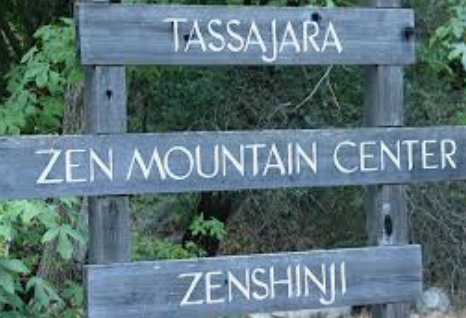
I don’t have to mention that it didn’t help to fuel my passion for regular meditation and so I was still in my on-off relationship with regular meditative practices, even if I really loved the relaxed state I reached in most of my meditations.
It has only been a year since my meditation experience changed fundamentally. I went to a ‘Healing Qui Gong’ retreat in a Zen Center in Carmel Valley, California and stayed there for 13 days.
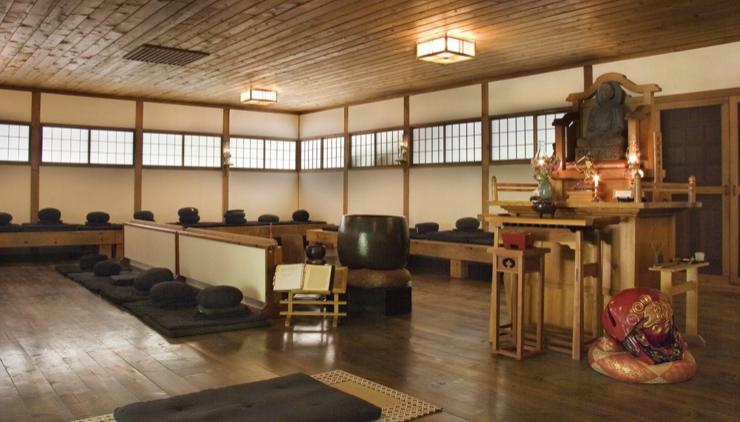
Every morning at 5.10am one of the Buddhist monks was running through the little community and waking everybody up for a common meditation in the Zendo, the community’s meditation space. We guests were invited to meditate with the monks. There were clear rules and rituals to follow and every morning you were assigned your meditation place in the Zendo. Everyone then took a seat on their meditation cushion with the eyes facing the wall. The meditation lasted sixty minutes.
I don’t know what it was exactly, but I was completely taken.
It was an incredible energy to meditate in complete silence with another fifty people in one room. Often my right leg fell asleep, which was extremely painful, but because I didn’t dare to move, I persevered. It was exciting to see how the pain changed and resolved on its own after a while. I had never meditated for an hour in a row before, but I could see that…
… the longer the meditation lasted, the calmer and somehow more awake, focused and clearer I became, and that was an incredibly fulfilling state.
I’m usually not someone who jumps out of bed with joy and energy at 5 in the morning, but it was different there. I always woke up before the monk’s wake-up bell and just looked forward to the meditation. Since then I no longer have to persuade myself to meditate, but meditation rather calls me. I’m really looking forward to it.
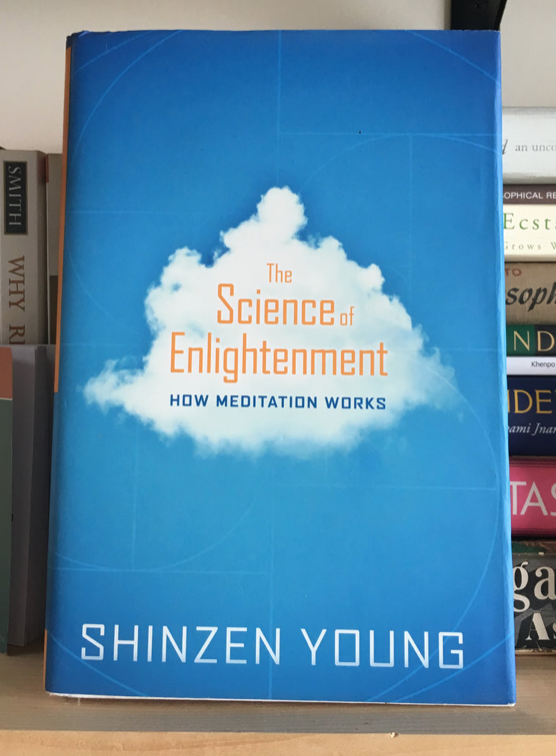
The next step, which deepened my meditation practice again, happened quite recently. Not that there wasn’t enough information about meditation and its effects out there before, but so far, I had never really made a huge effort to get into the theoretical depths of meditation. I wanted to find my way through my own experiences and my own senses and not through the textbooks. You have to know that I usually do it the other way around. I always try to understand everything, but often forget to feel things and just experience them myself – so I wanted to approach it differently this time. But then, as part of a training that I was doing, I discovered a resource that really fascinated me. It’s Shinzen Young’s book about “the science of enlightenment”, in which he gives some meat to what mediations is about and how to deepen your own practice. So, I changed my mind and dipped into the book. It gave me some aha moments which I would like to share.
Young describes in his book that all legitimate forms of meditation have one thing in common: they elevate a person’s base level of concentration power and focus, meaning how focused they are in daily life when they are not particularly making an effort to be concentrated.
All we do throughout the day relies on “concentration”, so if we practice, we can function from a higher level of focus every day. And it’s meditation helping us to get there.
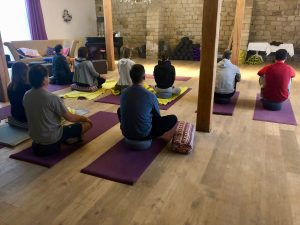
Sounds tempting, right?
Besides that, it leads to slower and deeper breathing and influences our brain wave patterns. During meditation the so called Alpha brain waves are the most noticeable, which are associated with both, being relaxed and alert at the same time. There you go, do you remember that I said my meditation experience in the Zendo in Carmel Valley made me calmer and somehow more awake, focused and clearer?
This is actually what’s happening in meditation, a state of being relaxed and alert at the same time, and the more we practice concentration, the brighter gets our alertness and the deeper our relaxation.
I notice this link between concentration and pleasure of being calm particularly clearly when I do, for example, a body scan during my meditation, which means that I focus on and relax into the individual parts of my body, which puts me in an incredibly calm and grounded state. But the body scan has another function for me. After I have scanned through all physical parts of the body, I concentrate on my emotions. What am I’m feeling in that moment and where in my body am I sensing this emotional experience, e.g. a fearful restriction in my chest or a happy smile on my lips. I just watch what’s there without judging or wanting to change it, it’s simply about getting connected with my emotions and the corresponding body sensations and understanding what they want to tell me.
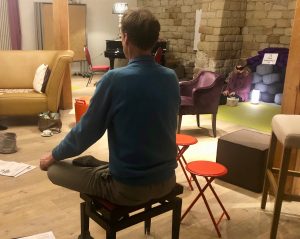
These emotional-type of body sensations, together with mental images and mental talk, are the three basic components of any emotional experience according to Young. Any perception of self involves one or a combination of these components, often they appear simultaneously. Mental images means that we mentally see the scene of a situation. We relive the past or fantasize about the future.
Mental talk is the self-talk in our head, we brood on what was said or we rehearse what we are going to say, we have judgements and make interpretations. Instead of getting entangled in all three of them at the same time, it makes it easier to understand, get an insight and cope with if we manage to break an experience down into these three components. However, in case we get caught up in all of them at the same time, they will even multiply each other and it makes the suffering associated with an uncomfortable experience seem much worse than it actually is.
Meditation can help us to develop what Young calls “SENSORY CLARITY”, the ability to look at emotional-type of body sensations, mental pictures and mental chatter separately.
The undivided concentration on each of the individual components means that our mind, emotions and sensations ultimately calm down and leave room for deeper insights.
This message, as simple as it may seem, really reached me. It’s not that I didn’t know about the existence of emotional-type of body sensations, mental pictures and mental chatter, however the real insight about the clarifying impact of experiencing all three separately landed really only now.

A third element of meditation, that Young introduces, is equanimity, which means we do not interfere with the natural flow of emotions and the correlated emotional-type of body sensations, mental pictures and mental talk. We allow them to expand, to contract or to be still, without trying to change them and without judging them. We just stay with them, observe them and see how they change over the course of time.
This seems quite counterintuitive in our modern times, especially when we are confronted with discomfort. Why staying with it? Remember my story from the beginning? Me feeling like a ‘tiger in the cage’, and instead of sitting with this massive discomfort I decided to go running and release the pressure on my system in a way that allowed me to quickly get comfortable again.
Trying to understand, to figure it out and to find a way to get comfortable again is a typical response to discomfort nowadays. Young describes how the figuring out led to science and getting more comfortable led to technology, both invaluable and responsible for our high standards of living, but they are just one way of tackling things.
The other way is to simply open up for discomfort rather than fight it or looking for a quick fix for it and instead of finding answers we can accept to not knowing things.
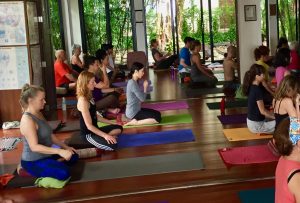
However, as we become more habituated to comfort, we lose the natural ability to cope with discomfort with equanimity. But that is exactly the key to get back into connection with ourselves, which in turn is necessary to gain insights about ourselves.
So, in a nutshell, we can wait and hope that insight happens one day, or we can accelerate the process through meditation. Or, in the words of Shinzen Young, concentration, clarity and equanimity is the essence of mindfulness meditation and acts as a catalyst facilitating the natural process of insight that’s just waiting to happen.
I really like this concept and I practiced it a lot lately. It gave my meditation practice a lot more focus and I have the feeling I see more, feel more and hear more already.
I sense that I can stay much calmer in situations that naturally would trigger me, and I really enjoy getting to know myself on a deeper level, even though sitting with my emotions and their correlated bodily sensations often really costs some effort and discipline. But it’s worthwhile.
I am getting more conscious and it gives me space to make choices to respond and act differently than I normally would do when falling reactively into some old behavioral patterns.
“Ok,” you say, “this sounds all great, but I am different. Meditation is not my cup of tea.” Well, are you really sure? Why not giving it a try? So, here are some tips how to go about some of the most common resistances…
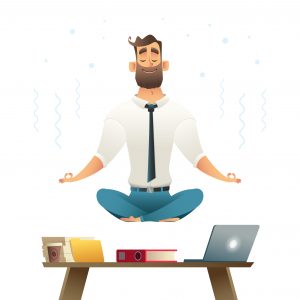
- I cannot clear my mind: you don’t have to. It’s totally normal that our mind is active. Just imagine you are stepping on a balcony and observing your thoughts with detachment instead of getting carried away by them. And if you get carried away and you realize it, just go back on the balcony again. As we now know the simple fact of sitting with and observing our mind will eventually calm it.
- I don’t have the time: remember, meditation is about elevating our base level of concentration power and focus and if we practice, we can function from a higher level of focus every day, which actually saves us time; so it seems like it’s worthwhile trying, what do you think?
- I cannot or don’t like sitting still: that’s ok, then go for a mindful walk (without headphones) or start with a Yoga or QI Gong class or do some breathing exercises (breath counting, for example, is a traditional, initial Zen concentration practice). You can learn to pay attention and concentrate in the midst of these activities.
- I tried and didn’t like it: there is not just one kind of meditation, there is a whole menu out there; just look for what suits you best.
And here is a real important last tip: be playful, be patient and compassionate with yourself and enjoy the experimentation!

